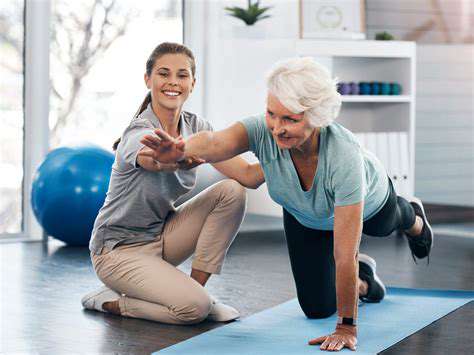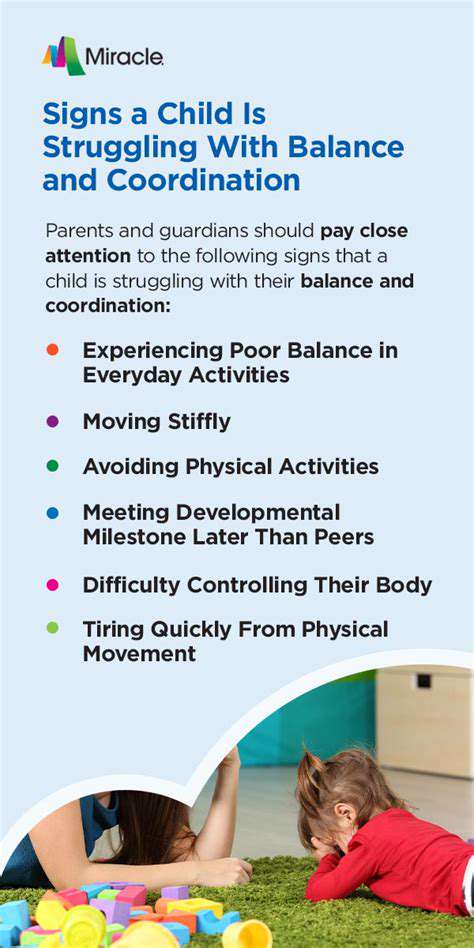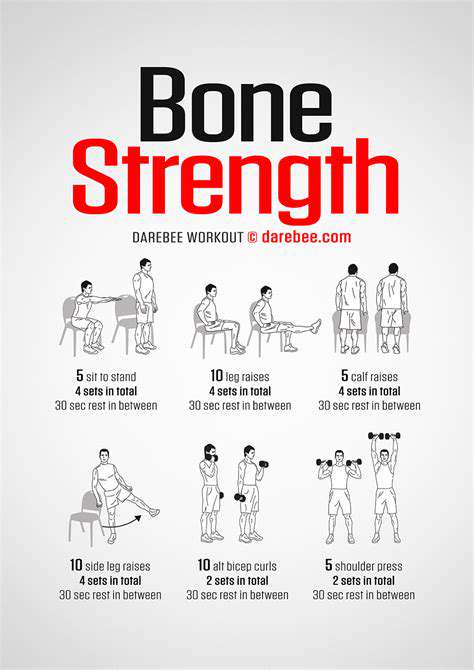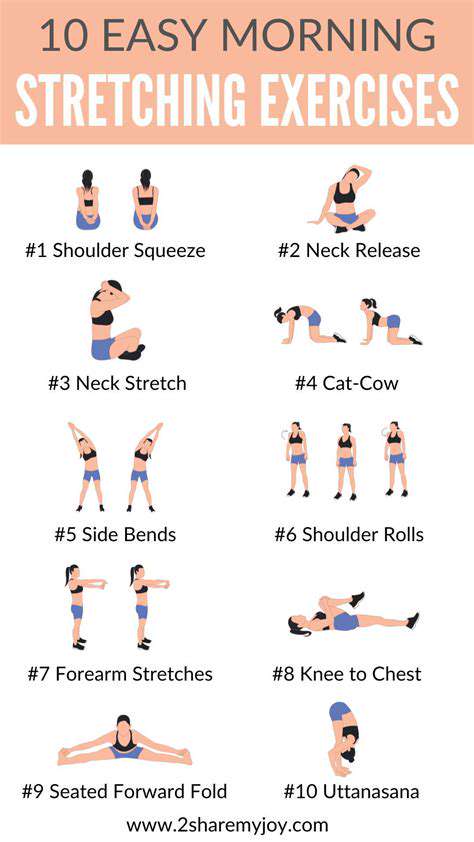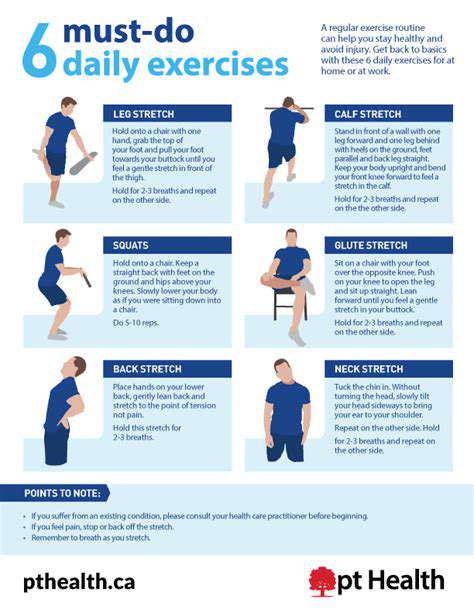Easy Exercises to Improve Senior Balance and Coordination
Strengthening Muscles Around the Joints
Joint health depends heavily on the muscular framework surrounding it. Chair squats, for instance, engage multiple muscle groups simultaneously while protecting vulnerable joints. This compound movement pattern mirrors real-life actions like standing from a seated position, making its benefits immediately applicable to daily living. The controlled resistance these exercises provide helps maintain bone density while preventing muscle atrophy.
What many don't realize is how these movements lubricate joints through increased circulation. The gentle compression and release action pumps nutrient-rich synovial fluid through joint spaces, reducing stiffness and discomfort. Participants often report being able to climb stairs or walk longer distances with greater ease after consistent practice.
Flexibility and Range of Motion
Mobility shouldn't be confused with flexibility - while related, they serve different purposes. Chair-based stretches specifically target functional ranges needed for everyday activities. The seated hamstring stretch, for example, directly impacts one's ability to bend safely to pick up objects or tie shoes.
An often-overlooked benefit is how these stretches improve circulation to peripheral areas. For those with diabetes or circulatory issues, this can mean better sensation in extremities and reduced swelling. The key lies in holding stretches at the point of mild tension, not pain, allowing connective tissues to gradually adapt.
Cardiovascular Health Benefits
Chair cardio proves that heart health isn't exclusive to high-intensity workouts. Seated arm circles with light weights, for instance, can elevate heart rates sufficiently to stimulate cardiovascular adaptation. This approach makes exercise accessible to those who might otherwise avoid activity due to mobility limitations or fear of overexertion.
The rhythmic nature of these movements also promotes better respiratory patterns. Many participants unconsciously hold their breath during exertion - chair exercises teach synchronized breathing that carries over to daily activities, reducing unnecessary cardiovascular strain.
Improved Posture and Body Awareness
Modern lifestyles often promote poor postural habits that chair exercises can correct. Seated spinal twists counter the forward hunch developed from prolonged sitting, while shoulder rolls release tension in overworked trapezius muscles. This postural realignment has cascading benefits, from improved digestion to reduced headaches.
The mindfulness component is equally valuable. By focusing on alignment during exercises, participants develop an internal checklist they can apply throughout the day - Are my shoulders relaxed? Is my spine properly supported? This constant micro-adjustment prevents the cumulative strain of poor posture.
Improving Balance with Tai Chi and Yoga
Tai Chi for Improved Balance
Tai Chi's flowing sequences train the body to move as a coordinated unit rather than isolated parts. This holistic approach explains why practitioners often report feeling more connected to their physical selves. The slow pace allows for constant micro-adjustments in balance that would be impossible at faster speeds.
Yoga for Enhanced Stability
Unlike static stretching, yoga poses challenge stability through active muscle engagement. Tree pose, for instance, isn't just about standing on one leg - it's about the hundreds of tiny muscular corrections happening every second to maintain the position. This neuromuscular training translates directly to better fall prevention.
Strengthening Leg Muscles for Stability
The quadriceps and gluteal muscles act as natural shock absorbers during walking. Chair pose in yoga specifically targets these areas, building endurance for real-world scenarios like waiting in line or climbing stairs. The isometric nature of these holds builds strength without joint impact.
Improving Flexibility for Better Balance
Restricted ankle mobility is a common but often overlooked contributor to balance issues. Yoga poses like downward dog stretch the entire posterior chain while encouraging proper foot alignment. This comprehensive approach addresses limitations that might not be apparent during everyday movement.
Mindfulness and Body Awareness for Balance
The practice of body scanning - mentally checking in with each body part - develops proprioceptive acuity. This skill becomes invaluable when navigating uneven terrain or recovering from potential stumbles. Many report catching themselves more quickly when they start to lose balance after consistent practice.
Postural Stability and Balance Exercises
Single-leg stands teach the body to recruit stabilizing muscles automatically. Starting near a wall for support allows gradual progression as confidence grows. The key is maintaining proper alignment rather than simply enduring the position - quality over quantity.
The Importance of a Balanced Diet for Enhanced Balance
Electrolyte balance plays a crucial role in neuromuscular function. Magnesium-rich foods like leafy greens support muscle relaxation, while potassium from bananas aids in proper contraction. This nutritional support enhances the benefits gained from physical practice.
Cool-down and Stretching for Recovery
Importance of Cool-down and Stretching
Post-exercise stretching serves as a transition period for the nervous system, signaling the shift from activity to rest. This psychological cue helps prevent the stiffness that often follows abrupt cessation of movement. The gentle pressure of stretching also stimulates lymphatic drainage, aiding in waste removal.
Static Stretching Techniques
The 30-second hold common in static stretching allows for the creep phenomenon - the gradual lengthening of connective tissues. This time-dependent process explains why brief stretches often feel ineffective. Focusing on exhaling into the stretch enhances the relaxation response for deeper release.
Dynamic Stretching for Seniors
Controlled leg swings not only improve hip mobility but also train reciprocal muscle coordination - the alternating engagement of flexors and extensors crucial for walking. The rhythmic nature mimics natural movement patterns, making it particularly functional for daily life.
Benefits of Stretching for Balance
Tight calf muscles can significantly alter gait patterns, increasing fall risk. Regular stretching maintains proper muscle length-tension relationships, allowing for more natural movement mechanics. This preventative aspect is often appreciated only after problems arise.
Cool-down Exercises for Improved Circulation
Gradual reduction in intensity allows venous return mechanisms to adjust gradually. This prevents the blood pressure drops that can cause post-exercise dizziness, particularly important for those on hypertension medications.
Safety Considerations for Seniors
The talk test provides an excellent intensity gauge - one should be able to converse comfortably during cool-down. Using chairs or walls for support during stretching prevents overbalancing while still allowing effective range of motion.
Incorporating Stretching into Daily Routine
Pairing stretching with established habits (like after morning coffee or during TV commercials) improves adherence. The cumulative effect of brief, frequent sessions often surpasses occasional longer sessions in maintaining flexibility gains.
